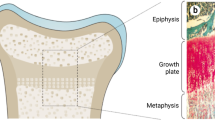Summary
An immunoquantification protocol based on an enzyme-linked immunosorbent assay was developed to measure the abundance of the microsomal enzyme steroid sulphatase (STS). The two-step sandwich immunoassay is sufficiently sensitive to detect 100–200 pg purified steroid sulphatase in a 50-µl sample. The steroid sulphatase content in fibroblast, leukocyte and placental extracts correlates with the steroid sulphatase activity in these extracts. No steroid sulphatase protein was found in approximately 350 µg plasma proteins from a normal person. In three of four X-linked ichthyosis patients a complete gene deletion was found by Southern hybridization with the full-length STS cDNA as probe. Neither steroid sulphatase protein nor enzymatic activity was found in fibroblast extracts of these three patients. In a fibroblast extract of another X-linked ichthyosis patient, which had a normal Southern blotting pattern, no immunoreactive protein was detected. Residual activity of steroid sulphatase was also not found after prolonged incubation of this fibroblast extract with the natural substrate oestrone sulphate.
Similar content being viewed by others
References
Ballabio A, Parenti G, Carrozzo R et al (1987) Isolation and characterization of a steroid sulfatase cDNA clone: genomic deletions in patients with X-chromosome-linked ichthyosis.Proc Natl Acad Sci USA 84: 4519–4523.
Ballabio A, Carrozzo R, Parenti G et al (1989) Molecular heterogeneity of steroid sulfatase deficiency: a multicenter study on 57 unrelated patients, at DNA and protein levels.Genomics 4: 36–40.
Basler E, Grompe M, Parenti G, Yates J, Ballabio A (1992) Identification of point mutations in the steroid sulfatase gene of three patients with x-linked ichythyosis.Am J Hum Genet 50: 483–491.
Dibbelt L, Kuss E (1986) Human placental steryl-sulfatase: enzyme purification, production of antisera, and immunoblotting reactions with normal and sulfatase-deficient placentas.Biol Chem Hoppe-Seyler 367: 1223–1229.
Epstein EH, Jr, Bonifas JM (1985) Recessive X-linked ichthyosis: lack of immunologically detectable steroid sulfatase enzyme protein.Hum Genet 71: 201–205.
Harlow E, Lane D (1988) Labeling antibodies, biotinylation using the succinimide ester. InAntibodies: A Laboratory Manual. New York: Cold Spring Harbor Laboratory, 341.
Herrman FH, Grimm U, Hadlich J (1987) Arylsulfatase C activity in leukocytes of patients and carriers of X-linked ichthyosis.J Inher Metab Dis 10: 89–94.
Herrmann FH, Wirth B, Wulff K et al (1989) Gene diagnosis in X-linked ichthyosis.Arch Dermatol Res 280: 457–461.
Kawano J, Kotani T, Umeki K, Oinuma T, Ohtaki S, Aikawa E (1989) A monoclonal antibody to rat liver arylsulfatase C and its application in immunohistochemistry.J Histochem Cytochem 37: 683–690.
Laemmli UK (1970) Cleavage of structural proteins during the assembly of the head of bacteriophage T4.Nature 227: 680–685.
Levy HB, Sober HA (1960) A simple chromatographic method for preparation of gamma globulin.Proc Soc Exp Biol Med 103: 250–252.
Lowry OH, Rosebrough NJ, Farr AL, Randall RJ (1951) Protein measurement with Folin phenol reagent.J Biol Chem 193: 265–275.
Page A (1987) A non-linear regression program in BASIC for estimatingK m andV max.Comput Appl Biosci 3: 49–51.
Parenti G, Ballabio A, Van der Loos CM, Jobsis AC, Andria G (1987) Studies on cross-reacting material to steroid sulphatase in fibroblasts from patients affected by different types of steroid sulphatase deficiency.J Inher Metab Dis 10: 224–228.
Petruschka L, Rebrin I, Grimm U, Herrmann FH (1990) The immunological evidence for a phenylalanine hydroxylase like immunoreactive protein in different human cells and tissues.Clin Chim Acta 193: 65–77.
Shapiro LJ (1989) Steroid sulfatase deficiency and X-linked ichthyosis. In Scriver CR, Beaudet AL, Sly WS, Valle D, eds.The Metabolic Basis of Inherited Disease. New York: McGraw-Hill, 1945–1964.
Stein C, Hille A, Seidel J, Rijnbout S et al (1989) Cloning and expression of human steroid-sulfatase: Membrane topology, glycosylation, and subcellular distribution in BHK-21 cells.J Biol Chem 264: 13865–13872.
Tiepolo L, Zuffardi O, Fraccaro M et al (1980) Assignment by deletion mapping of the steroid sulfatase X-linked ichthyosis locus to Xp223.Hum Genet 54: 205–206.
Vaccaro AM, Salvioli R, Muscillo M, Renola L (1987) Purification and properties of arylsulfatase C from human placenta.Enzyme 37: 115–126.
Van der Loos CM, van Breda AJ, van den Berg FM, Walboomers JMM, Jöbsis AC (1984) Human placental steroid sulfatase — purification and monospecific antibody production in rabbits.J Inher Metab Dis 7: 97–103.
Westermeier R (1990) Semidry-Blotting von Proteinen. InEletrophorese-Praktikum. Weinheim: VCH, 189–196.
Wirth B, Herrmann FH, Neugebauer M et al (1988) Linkage analysis in X-linked ichthyosis (steroid sulfatase deficiency).Hum Genet 80: 191–192.
Yen PH, Allen E, Marsh B et al (1987) Cloning and expression of steroid sulfatase cDNA and the frequent occurrence of deletion in STS deficiency: implications for X-Y interchange.Cell 49: 443–454.
Yen PH, Marsh B, Allen E et al (1988) The human X-linked steroid sulfatase gene and a Y-encoded pseudogene: Evidence for an inversion of the Y chromosome during primate evolution.Cell 55: 1123–1135.
Author information
Authors and Affiliations
Rights and permissions
About this article
Cite this article
Fan, X., Petruschka, L., Wulff, K. et al. Biochemical and immunological characterization of X-linked ichthyosis. J Inherit Metab Dis 16, 17–26 (1993). https://doi.org/10.1007/BF00711310
Received:
Accepted:
Issue Date:
DOI: https://doi.org/10.1007/BF00711310




